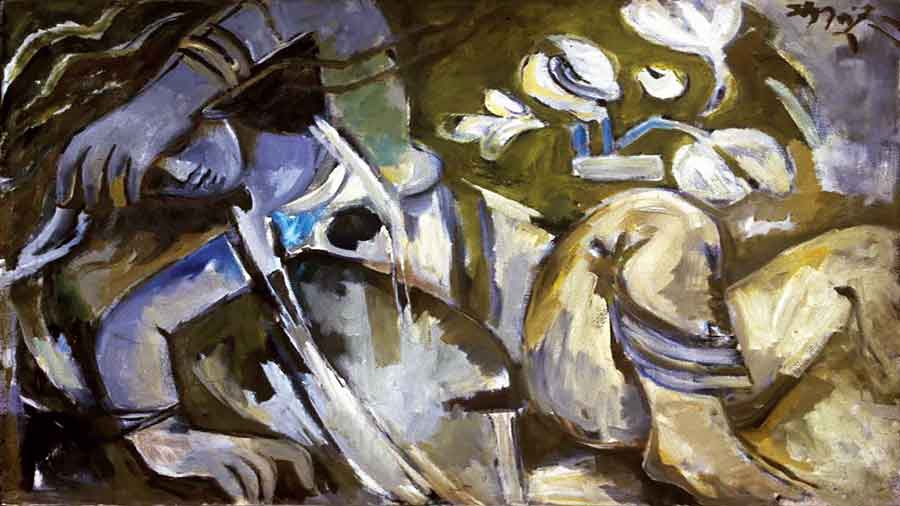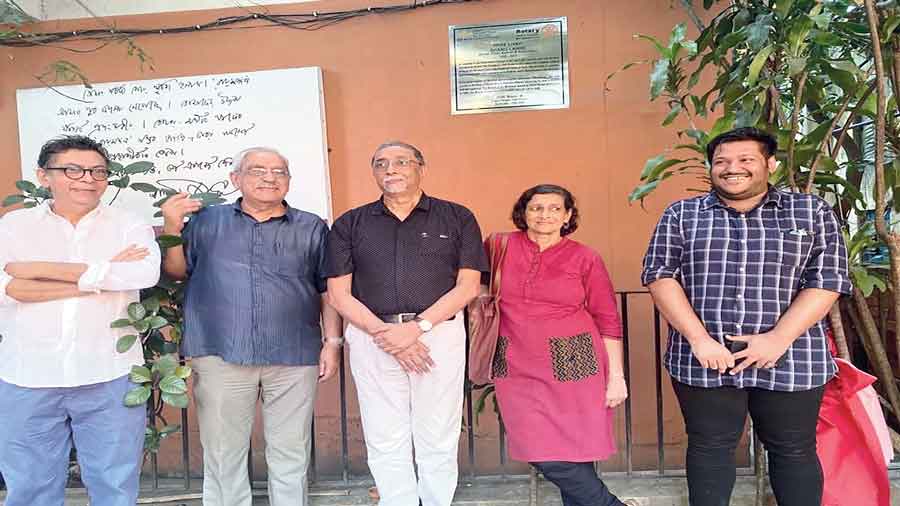A commemorative plaque on artist Shanu Lahiri (1928-2013) was unveiled on Friday at her Lake Town residence in northeast Kolkata, where she had lived and worked for the last 30 years of her life.
The plaque is an initiative of INTACH, an organisation that works on heritage awareness, and Rotary Club of Calcutta Metropolitan East. Lahiri’s works breathed life into the city.
Her Paroma statue at the Science City roundabout was a city landmark. Her spirited, bright murals on city walls had made blank or unprepossessing spaces come into life. “She was an uncompromising artist,” says Vinayak Pasricha, art curator and secretary, Rotary Club of Calcutta Metropolitan East.
Lahiri was inspired by her deep connection with her immediate reality and painted it vibrantly and passionately and with warmth and colour, without caring for intellectual trends. She was among the first generation of women in the country who entered the art schools in the 1940s. She rose to prominence in the art world at a time when it was almost entirely dominated by male artists.

A painting by Lahiri.
With four other artists, Meera Mukherjee, Karuna Shaha, Shyamasree Basu and Santosh Rohatgi Moitra, she had formed the first women visual artists’ collective in the country, The Group. “Ma lived and worked in this house, furiously,” says Lahiri’s daughter, Damayanti Lahiri.
Yet the city seems not only to have forgotten her, but has also mindlessly destroyed her legacy. The Paroma statue was razed a few years ago to make room for a sculpture of the Biswa Bangla globe. One of her murals, near Elgin Road, was pulled down more recently.
Perhaps such callousness also has to do with Lahiri’s place in the hierarchy of the art world.
“I am often asked as a curator how do we place Shanu Lahiri in the context of India’s modern art history? In some ways, it is hard to narrate the history of those who cannot be positioned within the top league, who cannot even find a place within the national canon of “women artists”,” says Pasricha.
“This reductionist view of having only a few artists of value is a grave misrepresentation of the sheer talent and creativity of hundreds of artists,” he says. The plaque is an effort towards remembering more, for some forms of forgetting can be damaging. For an individual, for a city. Hope the effort leads to more than a plaque.
